GSMD-500 | Grad Studio 1
Action 4 : Step Out and Look Wider – Generation
Starting Action 4, I was thinking about the concept of “Identity”. Random words came to my mind as I wrote them down:
How do we identify things? taking ice as an example. Ice is frozen water, it’s cold, has a rigid structure, it’s breakable. Things were getting somehow philosophical. I was thinking that coldness, is something I perceive while touching the ice. That’s a feature that comes to life in relation to others.
Moving on, I thought about people, places, voices, buildings, visuals… . What makes a place recognizable? What makes my neighborhood known? A Google Earth shot from above can be informative in a way, but can it present it the way I know it? I don’t think so.
I thought about fingerprints and how they matter in terms of identifying people. Fingerprints are permanent and they don’t change. I outlined my hand in different positions. These are all me but they don’t necessarily match. Identity is not static, it changes, it moves.
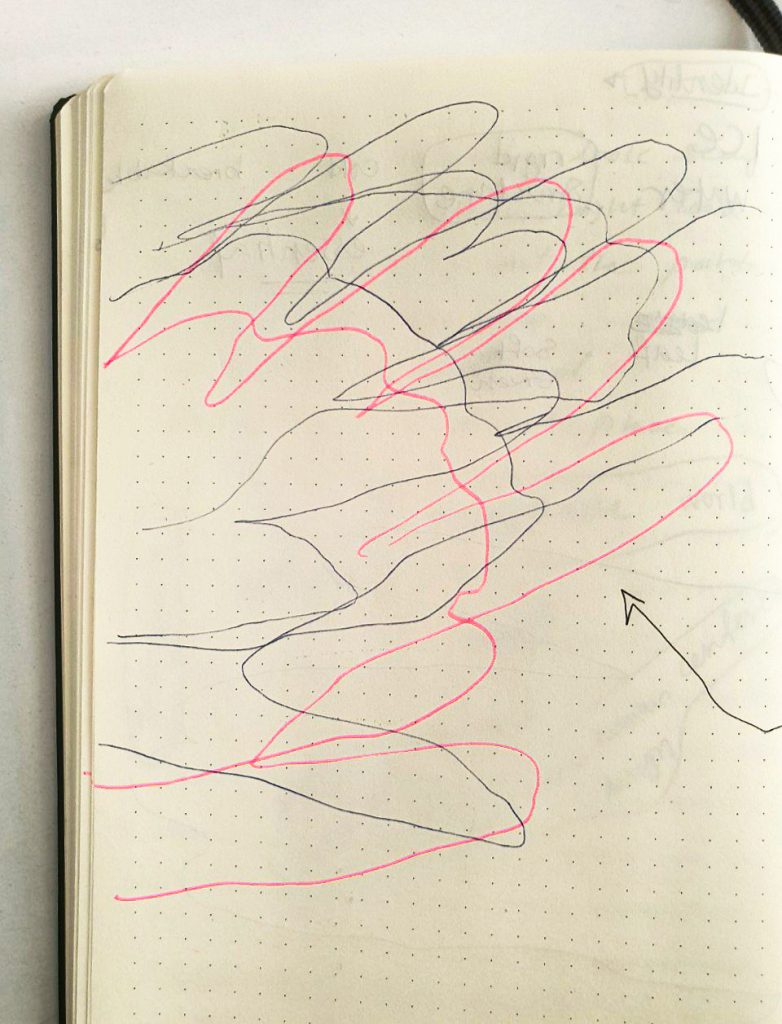
Then I thought about perspective. The way I know my neighborhood and see it, vs. how the street cats see it, and how the bugs and insects see/know it and how birds do while flying. I wanted to prototype these perspectives but it wasn’t possible for me to go out, so I just doodled some possibilities.

Is the neighborhood’s identity changing from different perspectives or they simply complete each other? how can we present the most complete version of identity (of a place / object / person)? how can we preserve it?
In action 3, we explored decolonial design and coloniality. Impacts of colonialism have been felt throughout the world; in my country, while we weren’t officially colonized, our political domain was a play ground for several power-seeking authorities of the West. As a result, amongst many prominent figures of Iran, “Modernity” was praised and was looked at as a hero, here to save us all. Consequently, anything that didn’t comply with modern features were dismissed or mocked, and was put in the “tradition” box, left to gain dust. The golden age of Persian art and architecture was perhaps seen as a glorious history which had come to an end, and it was time to embrace “Western Modernity”, because that was the best/only means of development. This infuriated fundamentalists, resulting in massive and continuous political conflicts and emergence of a view that condemned anything western-looking, good or bad, still overlooking what was really missing. At the end, Iran lost its present by detaching its identity from its past, leaving an unrecognizable future for us. This is a very short version of explaining how we, as a country, lost ourselves and were deprived of having a chance to develop (in the context of art, design and culture) on our own terms.
Tehran, the capital of Iran and my hometown, it the best representative of this fiasco. At the beginning of modernity in Iran, we managed to have some good projects in architecture although still highly influenced by West, they weren’t inherently bad or unsuccessful. But soon enough, the political battles and 8 years of war on top of a revolution left no room for art or design. Now after more that 30 years, we have an alarming disoriented city, with minimum green space, that lacks identity and besides some exceptional streets and boulevards, it rarely can offer any form of identity to its citizens.
As I was sitting behind my desk, I asked myself what would my room and its view look like if our culture and art was preserved.
Thinking about Iranian architecture I used the Orosi windows as a reference and decided to make a digital collage.

A Gereh Chini frame I’d made (With much Help from the instructor!) when I was 12 in an art class. Gereh is an element of Orosi windows. 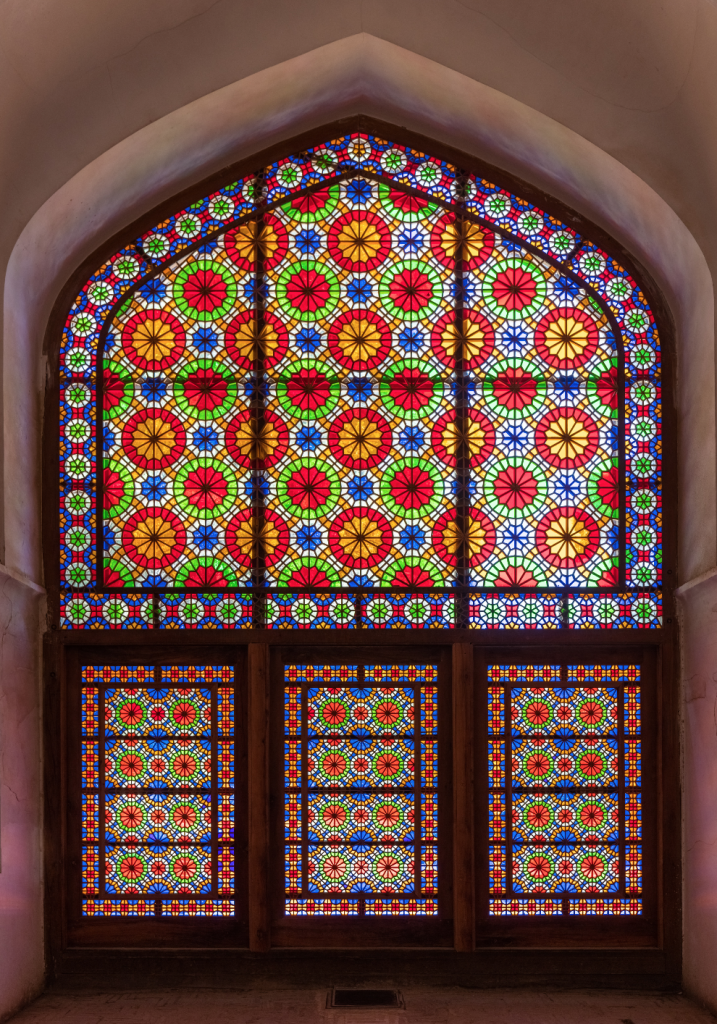
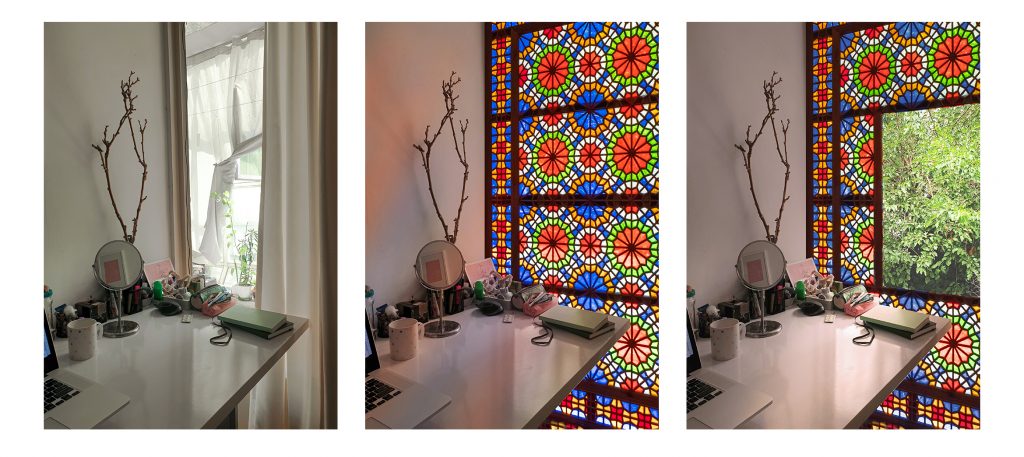

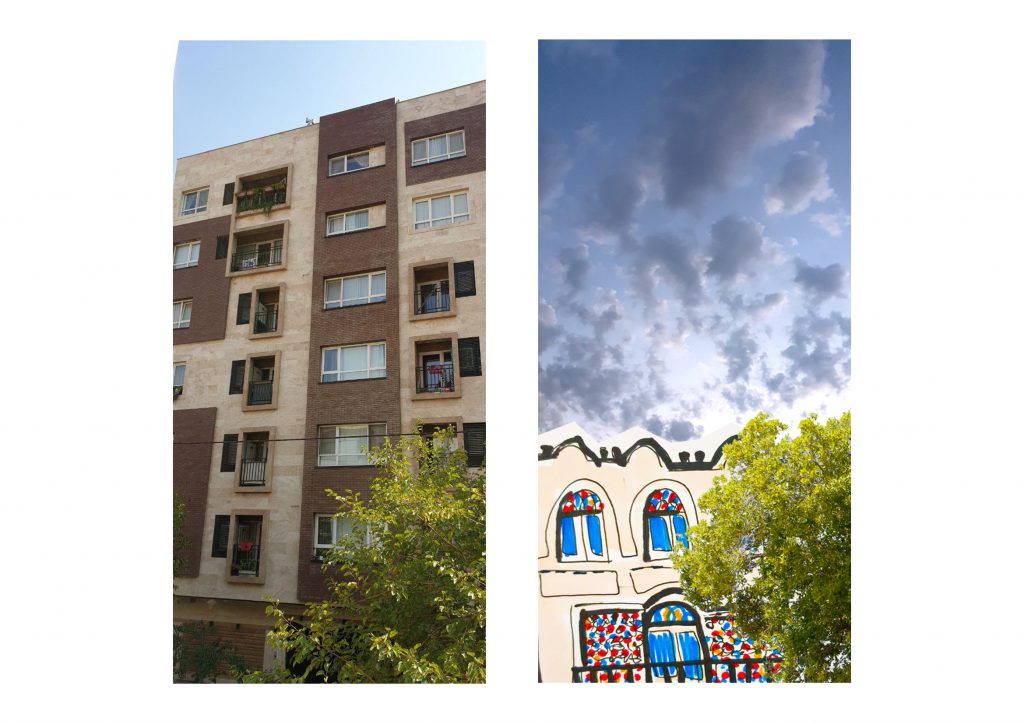
When we first moved in to this house, we had a view! This ugly apartment building hadn’t been made and the previous building was shorter, with 2 or 3 floors. Since this new one was built, I’ve completely lost the sight of sky and also sunlight for many hours of the day. I sketched an imaginary building with Persian elements (I’m in no way an architect!!) and made the view I would have loved to have.

I went to the rooftop to check out the hideous north view we have. We don’t have much windows to the north and I’m glad that we don’t! That tree and a tiny peak of Alborz mountains are the only things that make sense. I tried to eliminate all those extra elements and doodled over it. No building should block the mountains’ view, and that tree needs the respect and space that it deserves.
Looking back at my room photo collage, I thought to myself that generally, I prefer not to have colorful sunlight in my workspace, those can get you pretty sleepy, so I made a quick 3d model of an Orosi inspired window frame with a basic Gereh pattern, and tried to adjust my perhaps “modern” taste to it.
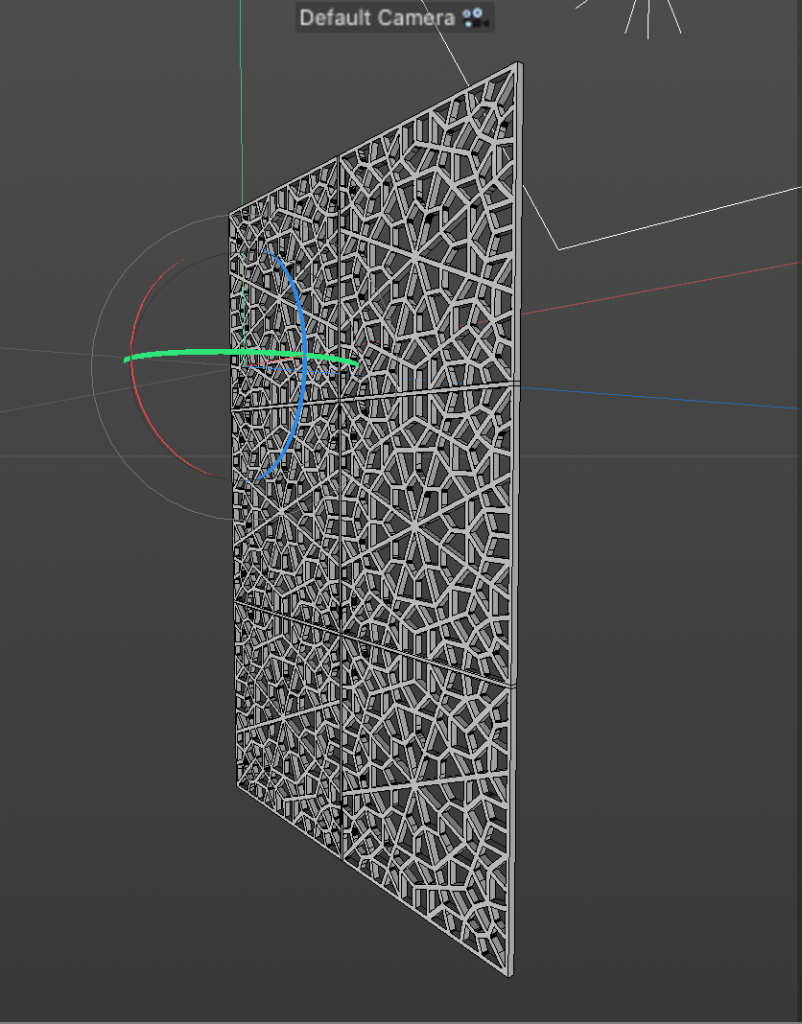
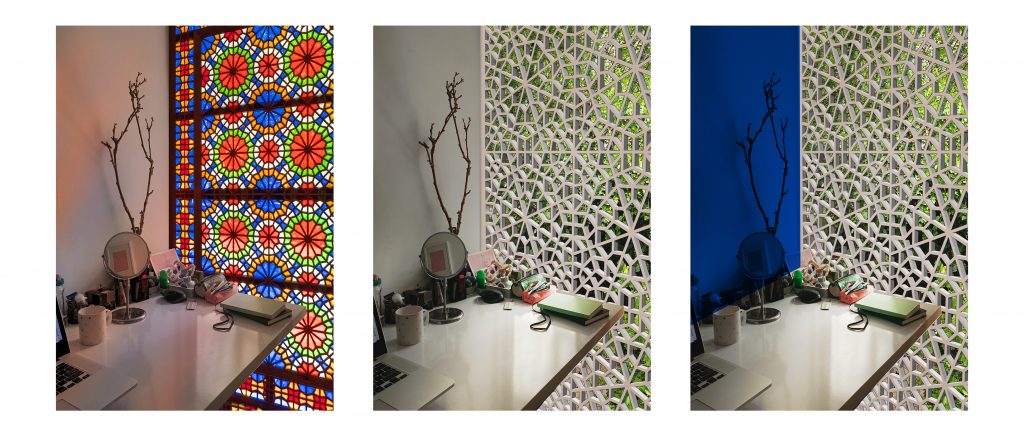

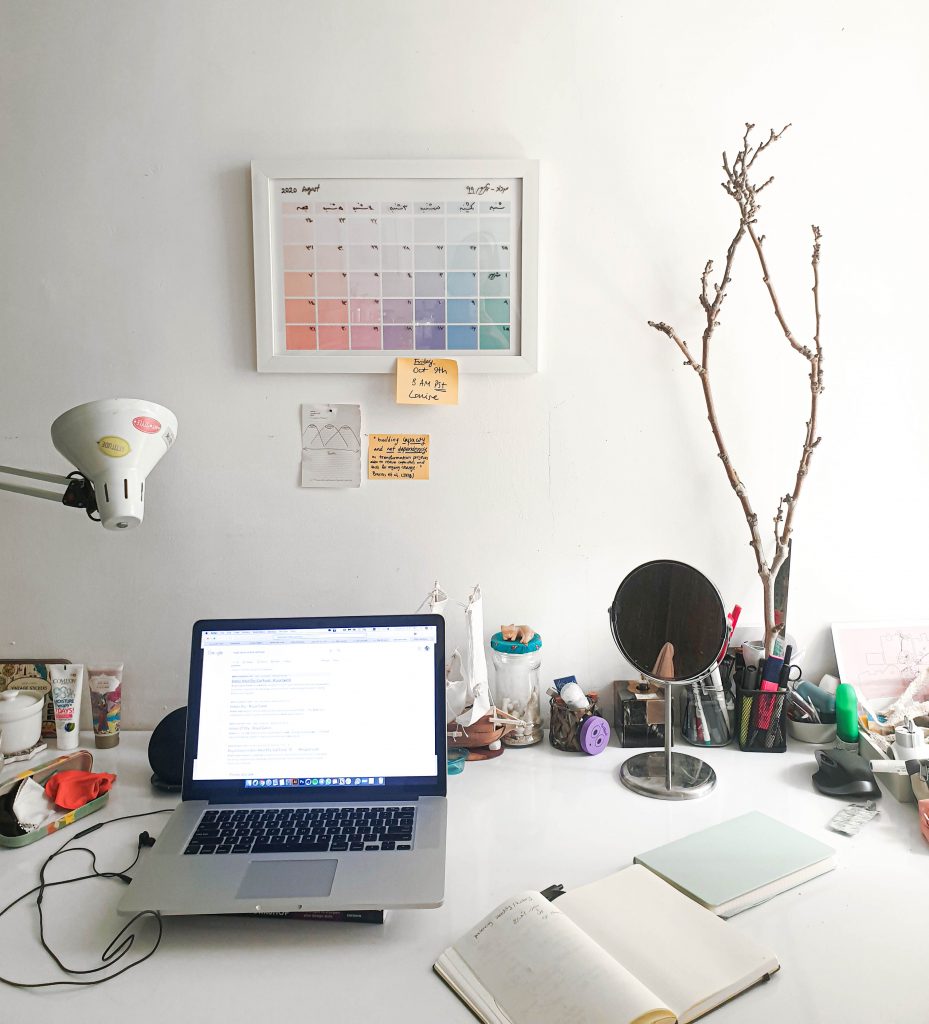
Looking back at my current workspace, many personal objects can be seen on it, but none of them has a cultural background. Besides one colored wall (not in this pic) and a small Persian Glim (rug), I have eliminated any visual decorations because I need this empty white space to breathe; Just like the roof top photo collage, this is the step that I’ve eliminated everything, and I’m embracing the white empty space as much as I can.
How can I reconnect with my cultural heritage and identity in a soulless city? How can I bring it back? Can I even do anything significant as an individual in this metropolis? But in this context, I’m still geographically involved, as I’m living in Tehran right now. What happens if I move to another country? Maybe when the visual noises disappear, I’d feel like something is missing?
If I move to Vancouver, how can I preserve my cultural identity there?
Can cultural identity be translated to objects (other than souvenirs)? Can I take it with me?
